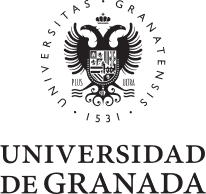The Impact of Intervention Dose Form on Oral Language Outcomes for Children With Developmental Language Disorder
Frizelle, Pauline; Tolonen, Anna-Kaisa; Tulip, Josie; Murphy, Carol-Anne; Saldana, David; McKean, Cristina
Publicación: JOURNAL OF SPEECH LANGUAGE AND HEARING RESEARCH
2021
VL / 64 - BP / 3253 - EP / 3288
abstract
Purpose: The aim of this study was to extract key learning from intervention studies in which qualitative aspects of dosage, dose form, have been examined for children with developmental language disorder (DLD)-in vocabulary, morphosyntax, and phonology domains. This research paper emerged from a pair of systematic reviews, aiming to synthesize available evidence regarding qualitative and quantitative aspects of dosage. While quantitative aspects had been experimentally manipulated, the available evidence for dose form (tasks or activities within which teaching episodes are delivered) was less definitive. Despite this, the review uncovered insights of value to DLD research. Method: A preregistered systematic review (PROSPERO ID: CRD42017076663) adhering to Preferred Reporting Items for Systematic Reviews and Meta-Analyses (PRISMA) guidelines was completed. Included papers were quasi-experimental, randomized controlled trial, or cohort analytic studies, published in any language between January 2006 and May 2019; oral language interventions with vocabulary, morphosyntax, or phonology outcomes; and participants with DLD (M = 3-18 years). The intention was to include papers in which dose form was experimentally manipulated or statistically analyzed, while quantitative dosage aspects were controlled, such that definitive conclusions about optimal dose form could be drawn and gaps in the evidence identified. Results: Two hundred and twenty-four papers met the above inclusion criteria; 27 focused on dose form. No study controlled for all quantitative aspects of dosage such that we could effectively address our original research questions. Despite this, key points of learning emerged with implications for future research. Conclusions: There is tentative evidence of advantages for explicit over implicit instruction and of the benefits of variability in input, elicited production, and gestural and other visual supports. With careful design of dose form, there is potential to design more efficient interventions. Speech language pathology research would benefit from an agreed taxonomy of dose form components and standardized reporting of intervention studies, to enable cross-study comparisons and a systematic accrual of knowledge to identify optimal dose form for clinical application.
MENTIONS DATA
Social Sciences, General
-
0 Twitter
-
0 Wikipedia
-
0 News
-
59 Policy
Publicaciones similares en Social Sciences, General





